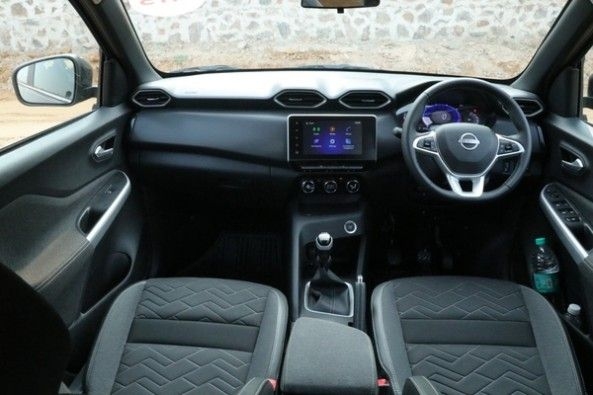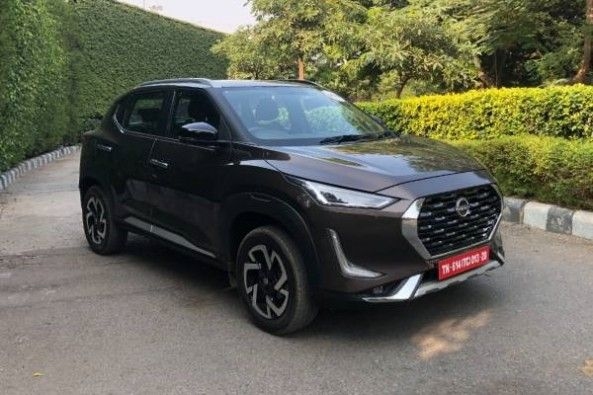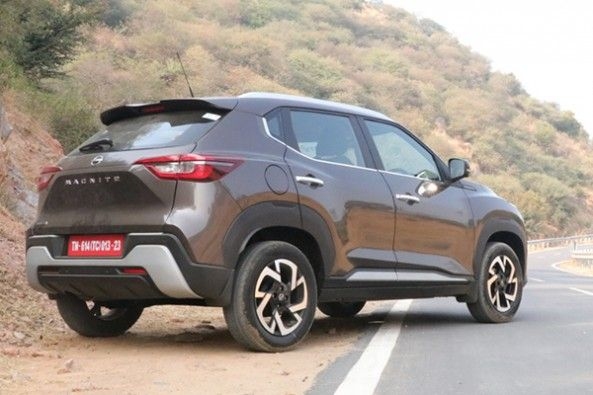The subcompact SUV is one category that is experiencing a lot excitement especially with the introduction of Hyundai Venue last year and this year followed the arrival of Kia Sonet. Nissan Motor India who has not been in the thick of action for some time now, is all set to introduce its version of the subcompact SUV in the form of Magnite. Has this introduction come in time or is it a bit too late for the Japanese manufacturer to dig in its heelsin the highly competitive segment, we try to answer the question by taking a look, feel and drive of the upcoming SUV.
How is it to look at?
This is not the first time that we are getting to see the Nissan Magnite in flesh. Rather a lot has been said and written about the upcoming SUV especially about the way it looks. Now that we have it right in front of our eyes, one can say that upfront it offers a very muscular design. Though there might be some resemblance with that off Datsun, a brand co-owned by Nissan keeping in mind the front grille. The grille for that matter comes in a dark grey finish with the Nissan logo placed right in the center off it. From a distance it might look great however coming a bit closer one thing is established for certain that its plastic quality is not that great, and the grille feels a bit flimsy.
Other key design elements are a pair of projector headlamps, L-shaped LED DRL’s, fog lights and a sliver skid plate upfront. The presence of a muscular bonnet and chrome embellishments further enhances the appeal of this vehicle. Coming to its sides there are 16-inch alloy wheels, muscular wheel arches with plastic cladding flowing throughout its profile and roof rails that complete its SUV look. As for the rear, there is a roof mounted spoiler below which sits a sculpted tailgate that provides LED taillights, a Nissan badge in the middle. Magnite Moniker, a turbo nameplate and a skid plate consisting of reflector on either side. Overall having a ground clearance of 205mm, the Magnite does look imposing and well attract many towards it.
How does it feel on the inside?

In comparison to what we have already seen on the outside, its interior is also interesting. The cabin comes in an all grey theme with textured seat fabric and a unique dashboard layout design. Talking about the latter, it provides three different layers. The top portion comprises of A/C vents which have their own sleek design followed by the center part that incorporates a tablet type of an 8.0-inch touchscreen infotainment system. This system comes compatible with wireless Apple CarPlay and Android Auto. It also offers connected car technology which is being provided in the top-end trim. While the last layer provides air-conditioning controls besides which there are toggle switches that are made up of good quality plastics. Further there are features like a 360-degree camera whose picture quality is not that great, but it still does the job somewhat, a wireless charger which has its own unique place below the dash. This facility really comes in handy especially for the driver and co-passenger.

Now onto the instrument cluster, it is a departure from what we have already been seeing in the past on other Nissan vehicles. This one provides a 7-inch fully digital TFT coloured display that looks funky both during the daytime and at night. Among other details it stands to feature a tyre monitoring system that comes handy both for city and highway use. Its steering wheel caters to mounted controls whose switches when touched upon feel quite good in terms of their build quality. Speaking about comfort, the cushioning of seats upfront and towards the rear is quite decent. Though the lumbar support for front two occupants feels on the harder side which could be an issue especially during long distance travelling. Rest in terms of space, there is decent amount of head, shoulder, and legroom in both the rows. All-in-all, the cabin is a nice place to be in though from an overall experience point of view the fit and finish of plastics could have been better to compliment its rather interesting layout.
What type of an engine does it offer?

Nissan has equipped the Magnite with two petrol engines. First is a 1.0-litre B4D dual-VVT petrol mill while the other is a 1.0-litre HRA0 turbocharged petrol powertrain. Out of the two, for the first drive we got to sample the 1.0-litre turbocharged engine that delivered a maximum power output of 99 bhp with 160 Nm of peak torque. This 999cc mill provides sheer exhilaration in terms of its performance be it the acceleration or the level of refinement. Putting it altogether was the manual gearbox which does pose a bit of a discomfort while slotting into third gear. For the rest, the transmission performs pretty alright. Talking about the ride quality, since we drove the subcompact SUV for a short duration it felt quite composed soaking in all the potholes and broken roads with utter ease. The power horse’s handling characteristics are impressive given that whichever direction you point the vehicle towards it will move accordingly. To sum up, the 1.0-litre turbocharged unit is fun to drive.

Should you consider it?
Nissan Magnite promises a lot, however keeping in mind competitors like Sonet, Venue, Vitara Brezza, Urban Cruiser and Nexon, the SUV will have to work its charm on customers. Charismatic as it is being referred to, the subcompact SUV has the potential in terms of exterior design, interior layout and features while the 1.0-litre turbocharged petrol engine is a delight to drive. Now it all boils down to the all-important question whether the company will be able to competitively price it given that the Japanese automaker had missed the train when they last launched the Nissan Kicks.
Until then drive and ride Safe!!





